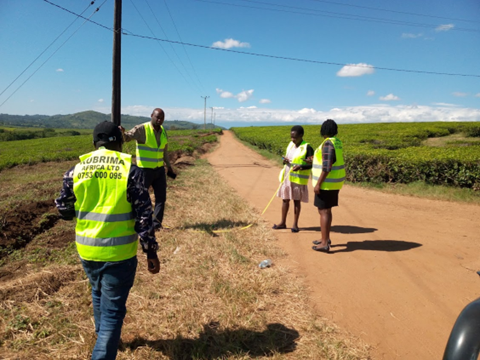
The question is, what is the missing link in ensuring increased access to safe water in Uganda?
Published on: 21/11/2023
From 2018 to 2022, the national budget for water and environment increased from Shs800 billion to 1.2 trillion. However, access to water dropped from 69.8% to 67%. This fits well with the saying that money cannot buy everything. The question is, what is the missing link in ensuring increased access to safe water in Uganda?
Globally, 2.1 billion people lack access to safe water services. In Uganda, over 30% of the 45 million people have no access to safe water services.

Uganda and the world at large can borrow a leaf from the IRC’s approach to reaching 100% water access in Kabarole District, one of the rural districts in mid-western Uganda. IRC as a leading implementing partner with Kabarole District embarked on a journey of building resilient WASH systems. In 2017, only 51.8% of the people in Kabarole had access to safe water. In partnership with the district's local government, IRC embarked on a journey of addressing the challenges and bottlenecks that constrain the district from improving access to safe water. IRC called this a WASH system strengthening approach.
Long-term planning as opposed to short-term planning led to the development of the Kabarole District WASH Master Plan 2018-2030 for 100% access to safe water services. Not only has it improved the allocation of resources, but it has also served as a rallying tool for mobilizing both government and non-government stakeholders from the sub county to the national level to invest in safe water access in Kabarole. Through systems strengthening, IRC has established robust monitoring that has enabled the district to identify unserved areas. This has allowed for targeted interventions while creating early detection mechanisms to overcome the failure of the water infrastructure.
IRC has also supported the district in developing and implementing progressive water and sanitation policies that call for everyone’s participation and contribution. The Pay as You Fetch model was formally adopted by the district council enabling the community to contribute funds. This has freed funds that would otherwise have been used to repair and maintain water points. This now increases funds for investment in new water points. Sanitation ordinances that will reduce contamination of water sources have been developed to create responsible citizens.
At the centre of this systems strengthening is the learning culture that enables the district staff to search for innovative approaches, advocate for progressive ideas, and adapt to the latest changes. For example, through a learning approach, IRC supported Kabarole District to develop a multi-stakeholder district WASH Task Team to oversee the adoption of innovative ideas in the district. The task team has supported the district in embracing the new guidelines for the operation and maintenance of water infrastructure and established the district water board, among others.
These efforts have begun to pay dividends. Kabarole is poised to be among the few districts to achieve 100% access to safe water. Access to safe water has increased to 78% and several villages without any safe water source reduced from 66 in 2017 to only 26 villages. According to the financial gap analysis conducted by IRC, Kabarole District now needs USD17 million for new investments in water to reach 100% access to safe water falling sharply from USD24 million in 2018.
“With additional resources coming in from the government and new implementing partners rallying behind our cause, we can be among the few districts in Uganda to reach 100% access to safe water by 2030. We only need to continue gaining momentum that we have exhibited in the past five years of implementing the WASH Master Plan,” says Hon. Richard Rwabuhinga the district chairperson, Kabarole.
This progress cannot be left to be a unique feature of Kabarole District. We cannot continue to spend millions without increasing access to safe water. This will be a pure waste and frustrating. We cannot continue in a business-as-usual mode if we must attain access to safe water for all by 2030. It is time for the country to invest in processes that will lessen the bottlenecks to increasing access to safe water and build capacity for sustainable solutions rather than long water pipe networks and taps. It is time for lasting change; it is time to build WASH systems.
This article is Martin Watsisi’s product after participating in the WASH storytelling write shop, organised for regional partners, and facilitated by IRC Uganda as one of the in-country learning and documentation commitments under the One For All alliance. See link for more information.
At IRC we have strong opinions and we value honest and frank discussion, so you won't be surprised to hear that not all the opinions on this site represent our official policy.